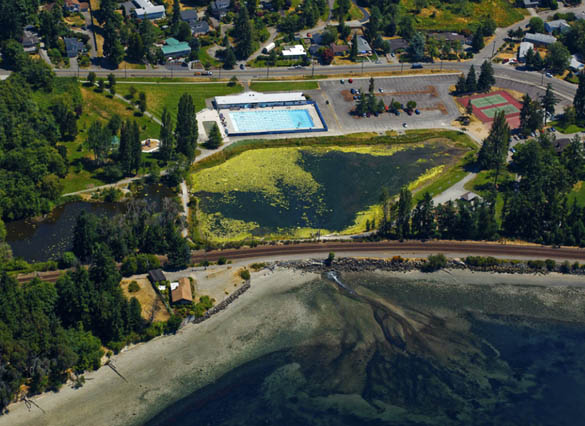The Washington Department of Fish and Wildlife (WDFW) has begun distributing $12 million in funding for 20 local projects designed to protect and restore the natural shorelines around Puget Sound.
According to WDFW officials, local governments, tribes and non-profit organizations from Hood Canal to the San Juan Islands applied for funding through two competitive grant programs administered by the department. Funding distributed by WDFW through those programs comes from a combination of state capital funds and federal grants from the Environmental Protection Agency (EPA).
In Pierce County, a $92,065 grant was awarded to develop design and permit documents for replacement of a culvert with a 40 foot railroad bridge to improve connectivity and fish passage between Titlow Lagoon and Puget Sound. Project efforts will also develop design and permit documents for removal of pool and parking lot infrastructure on the footprint of the historic Lagoon/saltwater wetland for expansion of the existing lagoon and restoration of riparian and salt marsh habitat. Historically, Titlow Lagoon provided over five acres of intertidal habitat, with over 25 acres of marsh and forested wetland habitat. Currently, the outlet to the lagoon is impounded by a foot-foot culvert which greatly inhibits fish passage and tidal connection between the lagoon and Puget Sound, according to project sponsor South Puget Sound Salmon Enhancement Group.
Betsy Lyons, who manages WDFW’s Estuary and Salmon Restoration Program (ESRP), said most projects funded this year involve removing unnecessary bulkheads, correcting barriers to salmon passage and restoring tidal functions altered by land-use practices over the past century. “More than a quarter of Puget Sound’s 2,500-mile shoreline is currently lined with bulkheads or other types of shoreline structures,” said Lyons. “These restoration projects will play an important role in advancing salmon recovery and ensuring our natural areas are healthy and productive.”
Twelve projects will be funded this year through ESRP, which is supported by revenue from the state’s capital construction budget. Six other projects, specifically geared to beach restoration, were funded through EPA grants administered by the WDFW’s Marine and Nearshore Grant Program, and two other projects were funded by both programs.
A complete list of projects is available online at wdfw.wa.gov/news/aug2113a/.







